Chapter: The Massage Connection ANATOMY AND PHYSIOLOGY : Muscular System
The Axial Musculature - Origin and Insertion of Muscles
Origin and Insertion of Muscles
Knowledge of origin, insertion, and action of muscles is important for massage therapists to better serve their clients. This knowledge enables the therapist to target specific groups of muscles according to their actions. Both agonists and antagonists of particular movements can be worked on effectively. Strokes can be directed in relation to the direction of the fascicles for maximum benefit. The therapist will be able to recommend innovative passive and active exercises according to the client’s symptoms. Therefore, the therapist should have a thorough knowledge of mus-cle anatomy and physiology. The muscles in this book are described according to their actions in different regions.
THE AXIAL MUSCULATURE
Muscles Responsible forFacial Expression Changes
These muscles (see Figure 4.19, Table 4.1) originate from the bones of the skull. The connective tissue surrounding the fascicles of these muscle fibers are woven into the connective tissue of the dermis of the skin. In this way, when the muscles contract, the skin moves and alters the expression on the face. All these muscles are innervated (receive nerve supply/stimulation) by the fa-cial nerve (cranial nerve VII). As with all paired muscles, the right half of the face is innervated by the right nerve and the left side by the nerve on the left.
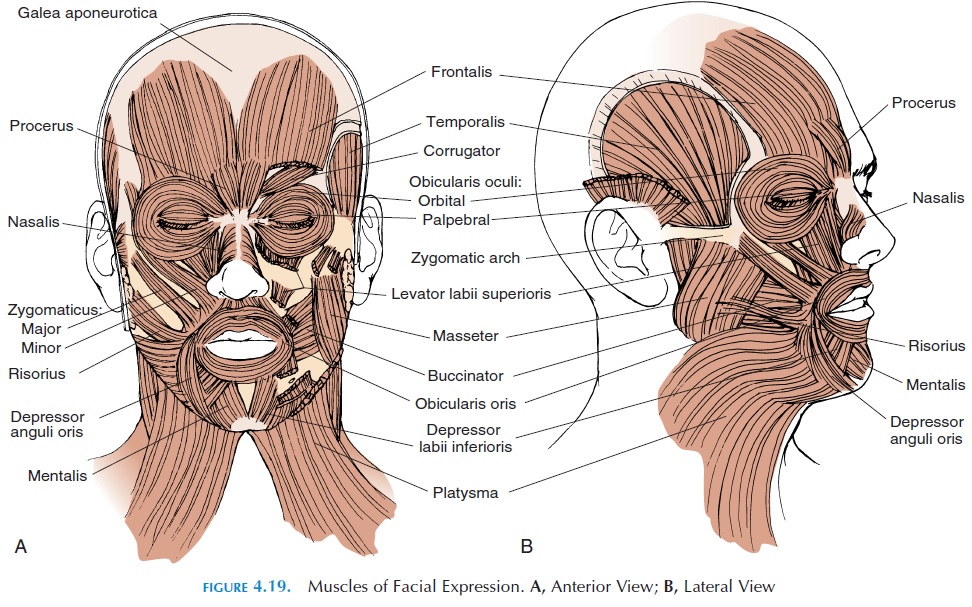
Muscles of Mastication
These muscles (see Figure 4.20 , Table 4.2) move the jaw and help chew and move food around the mouth. Most of these muscles are in-nervated by the trigeminal nerve (cranial nerve V).
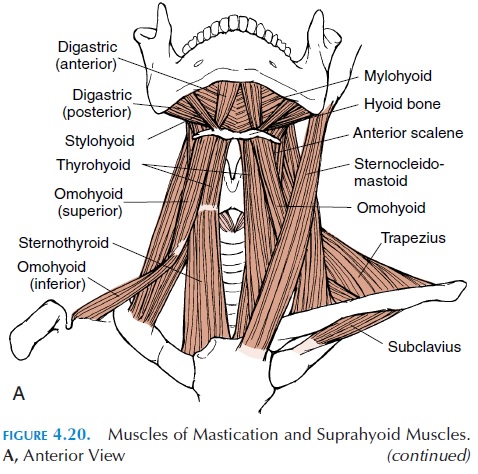
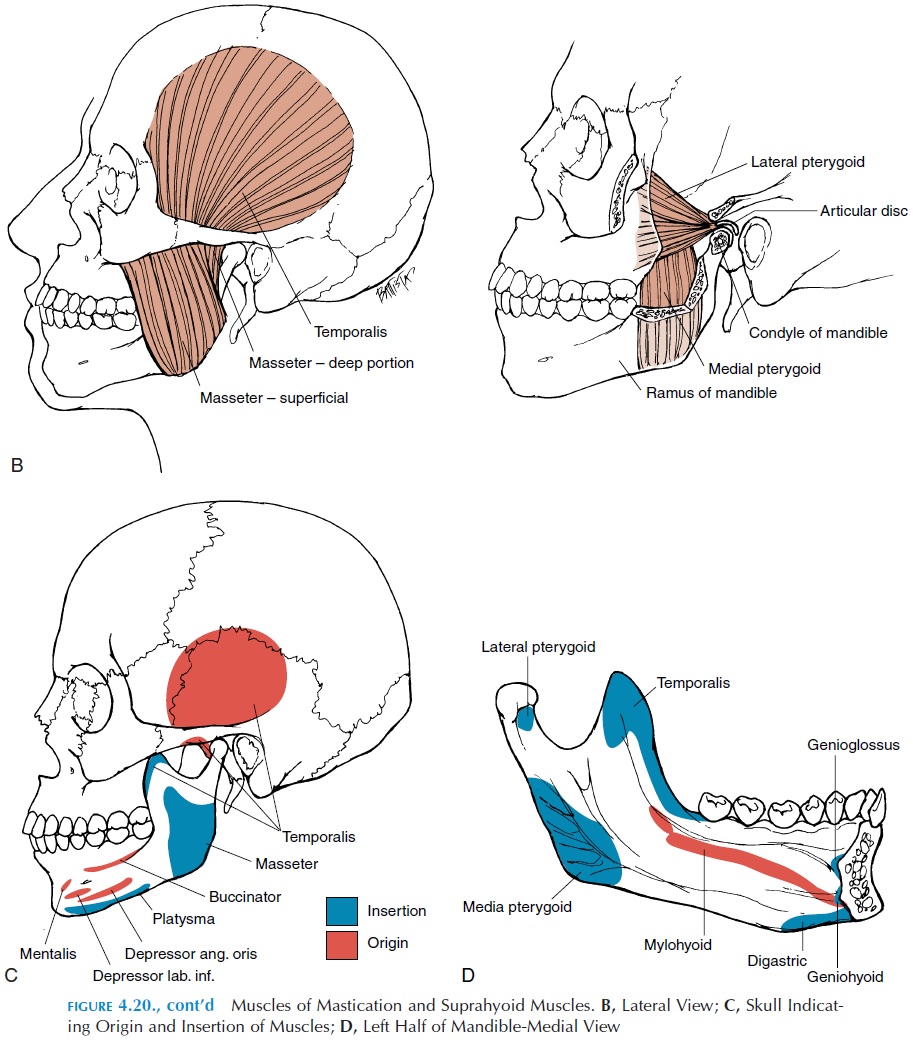
Muscles of the Tongue
There are many tongue muscles, all names beginning with the region of origin and ending with the term glossus, meaning tongue. These muscles originatefrom the styloid process of the temporal bone (Fig-ure 3.8), soft palate, hyoid bone, and medial surfaceof mandible around the chin; they are called sty-loglossus, palatoglossus, hyoglossus, and ge-nioglossus, respectively. Together they move thetongue in all directions, enabling speech and move-ment of food in preparation for swallowing. The mus-cles of the tongue are innervated by the hypoglossal nerve (cranial nerve XII).
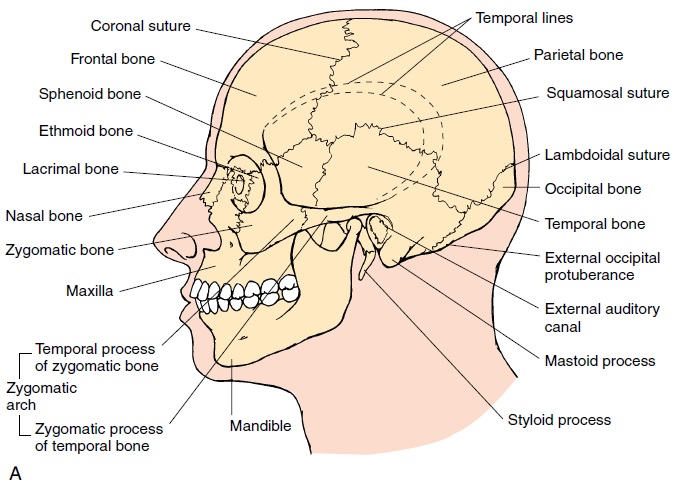
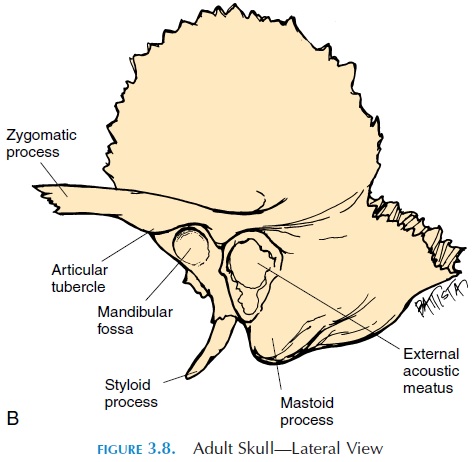
Muscles of the Pharynx
These muscles are responsible for the swallowing process. Because the pharynx serves as a common passage for both food and air, all passages other than that of the food must be closed when food is swal-lowed. Many pharyngeal muscles are present. (The individual names are not addressed by the book because they are not relevant to the audi-ence. The student is encouraged to read an anatomy textbook for medical students for the individual names of pharyngeal muscles.)
Most muscles are innervated by the glossopharyn-geal nerve (cranial nerve IX) and the vagus nerve (cranial nerve X). Some muscles of the palate are in-nervated by the trigeminal nerve (cranial nerve V) and the accessory nerve (cranial nerve XI). The com-plexity of the swallowing process is realized when a nerve is injured; the person has difficulty swallowing and speaking. The food may enter the larynx and lead to lower respiratory tract infections and may also re-gurgitate into the nose.
Muscles of the Head and Neck
The muscles of the head and neck help position and move the head and assist with breathing, swallowing, and coughing.
Muscles of the Anterior Aspect of Neck
These muscles (see Figures 4.20A and 4.21) depress the mandible, tense the floor of the mouth, control the po-sition of the larynx, and help provide a stable founda-tion for the muscles of the tongue and pharynx. The points of attachment of these muscles include the hyoid bone, the cartilages of larynx, the clavicle, and sternum.
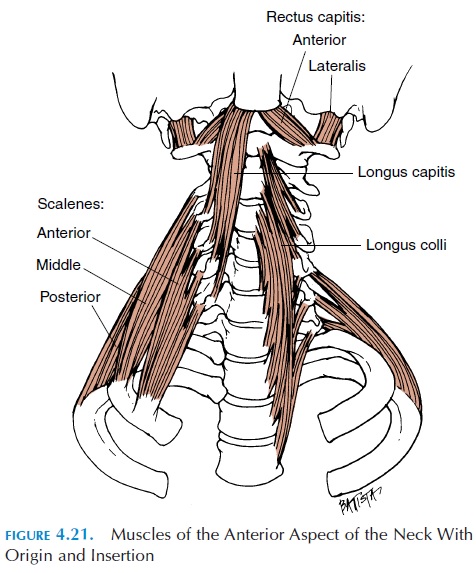
The sternocleidomastoid muscle becomes prominent in the front of the neck when the head is turned to one side. The sternocleidomastoid is the largest anterior muscle, acting on the head and neck. The origins and insertions of the small muscles of the neck are listed in Table 4.3. The names of many of these muscles suggest the origin and insertion (e.g., sternohyoid, stylohyoid, geniohyoid, thyrohyoid, ster-nothyroid, omohyoid). The sternocleidomastoid is in-nervated by the accessory nerve (cranial nerve XI).
Deep Muscles of the Neck,Anterior to the Cervical Spine
Deep skeletal muscles, posterior to the pharynx, just anterior to the cervical vertebrae help flex the cervical spine. The longus capitis extends from the transverse processes of the cervical vertebrae to the occipital bone and helps flex the head. Rotation of the head is aided by muscles (longus cervicis) that extend from the body of cervical and thoracic vertebrae to the transverse processes. All of these muscles are spinal muscles.
Muscles in the Posterior Aspect of Neck
Straplike muscles (see Figure 4.22, Table 4.4) extending from the spinous and transverse processes of the thoracic and cervical ver-tebrae to the occipital bone help keep the head erect and extend and hyperextend the head. These muscles are covered by the origin of the trapezius.
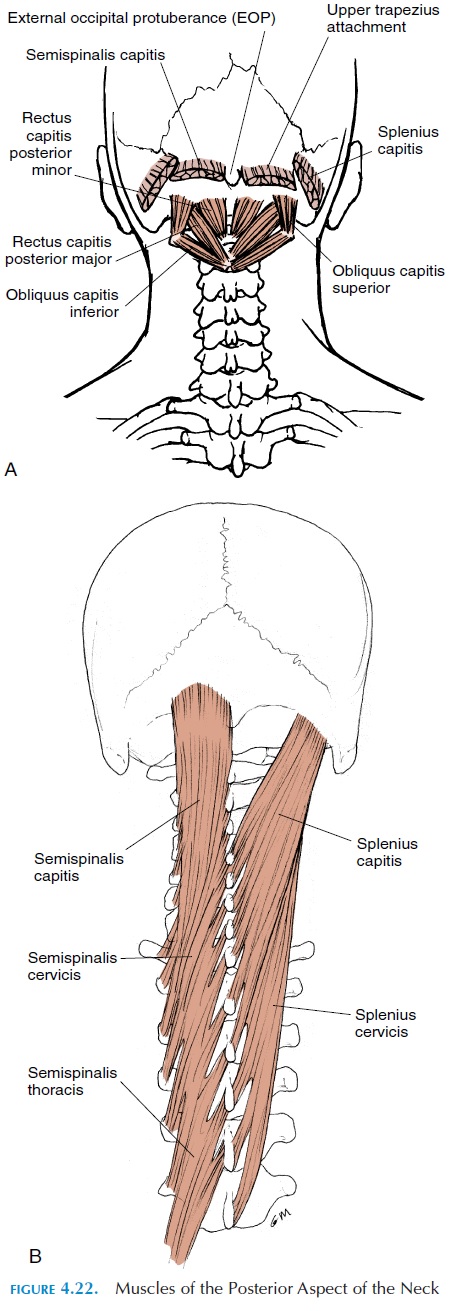
The cervical muscles are those often injured in whiplash. In this condition, usually caused by car ac-cidents, the head is thrown forward and then back-ward like a whip, injuring the structures in front and the back of the neck.
Muscles of the Trunk
The trunk muscles include those of the spine, thorax, abdomen, and pelvis. They help stabilize the trunk when the head and extremities move; protect the spine; and help maintain posture, breathing, coughing, strain-ing. The abdominal muscles support and protect the viscera.
Muscles of the Spine
Some muscles of the spine have been described with the muscles of the neck. The muscles that move the spine are covered posteriorly by large superficial muscles, such as the trapezius and latissimus dorsi.
The Spinal Extensors
The muscles that extend the spine are known as the spinal extensors, or erector spinae, muscles. Theyinclude the superficial and deep layers of muscles (see Figure 4.23).
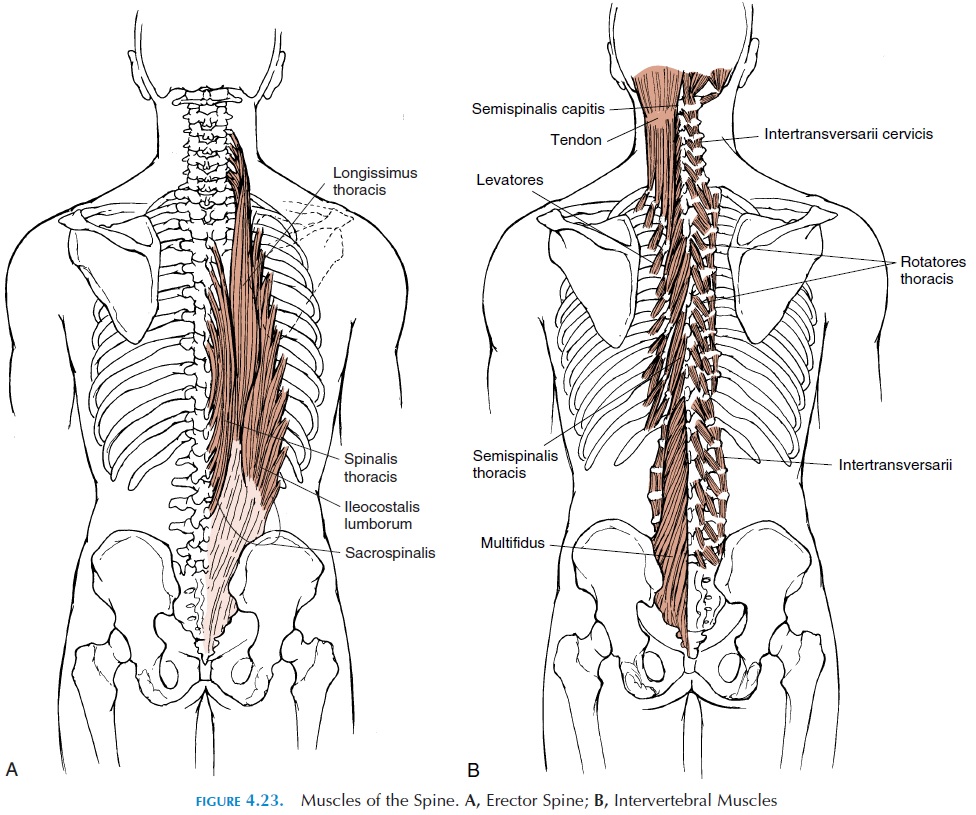
The Superficial Muscles
The superficial layer of muscles can be divided (from medial to lateral) into the spinalis, longissimus, and iliocostalis divisions. The longissimus and ilio-costalis are not distinct in the lower lumbar and sacral regions and are known as the sacrospinalis muscles. When muscles on both sides contract, the spine is extended. Contraction of one side bends the spine laterally (lateral flexion).
The spinalis group: The semispinalis muscles arise from the transverse processes of the spines and insert into the adjacent spinous processes. The spinalis muscles go from spinous process of one vertebra to spinous processes of others located above.
The longissimus group: The longissimus group ex-tends from the transverse processes of lower verte-brae to those located above or to the ribs.
The iliocostalis group: The iliocostalis muscles ex-tend from the ribs to the transverse processes of ver-tebrae and/or the ribs located above.
All spinal muscles are innervated by spinal nerves that exit from the spinal cord in the specific region of the muscle.
The Deep Muscles
The deep layer of muscles consists of smaller muscles that interconnect vertebrae and help stabilize the ver-tebral column. They also help extend or rotate the spine and are important for adjusting positions of in-dividual spines. It is important for an athlete to stretch and warm these small muscles before any major activ-ity. These muscles include the intertransversarii, ro-tatores, interspinales, and multifidus.
Spinal Flexors
Although all of the above muscles help with extension and rotation, there are few muscles that help with flexion. Certain large muscles of the trunk serve as major flexors of the spine; the longus capitis and longus cervicis rotate and flex the neck, and the quadratus lumborum muscles in the lumbar regionflex the spine (Figure 4.24).
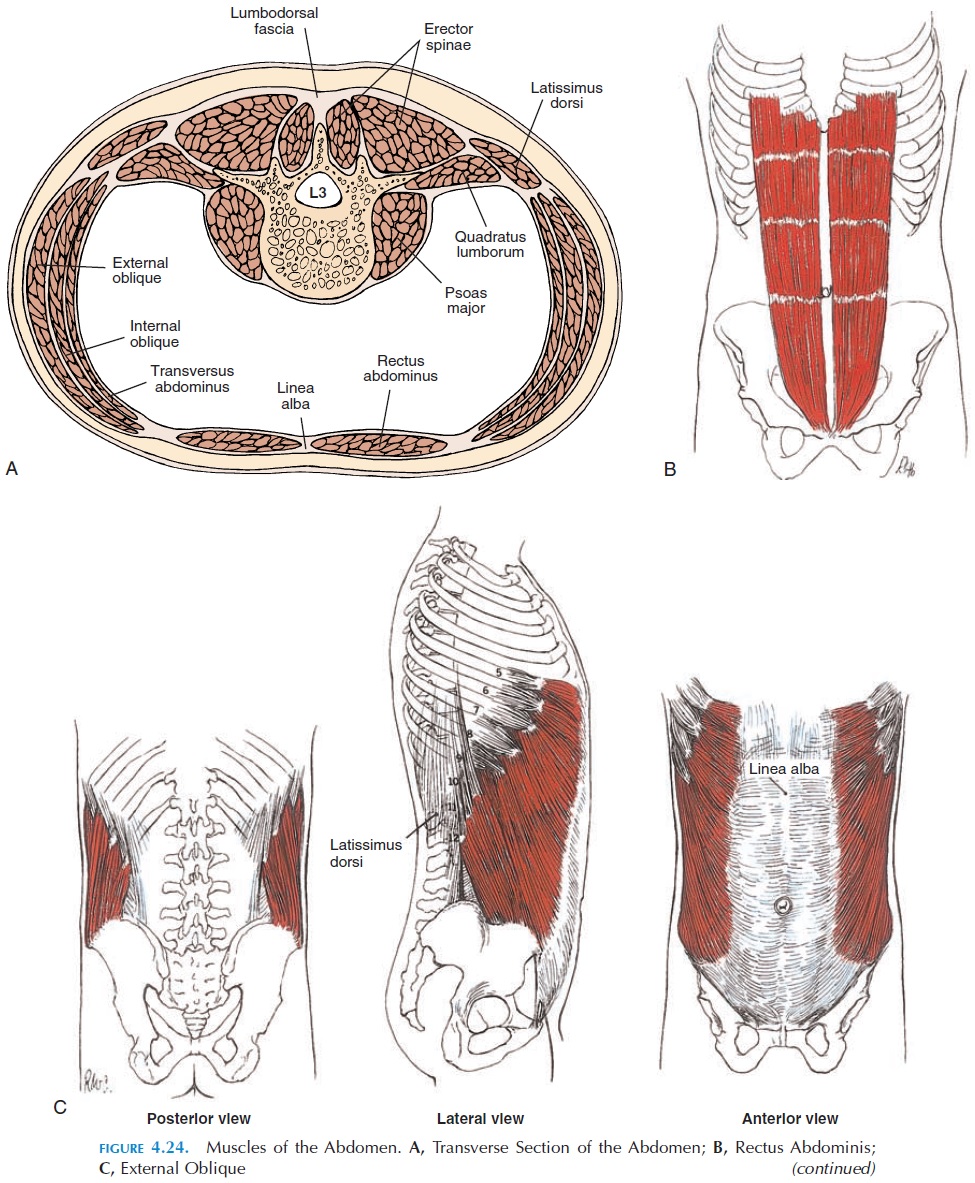
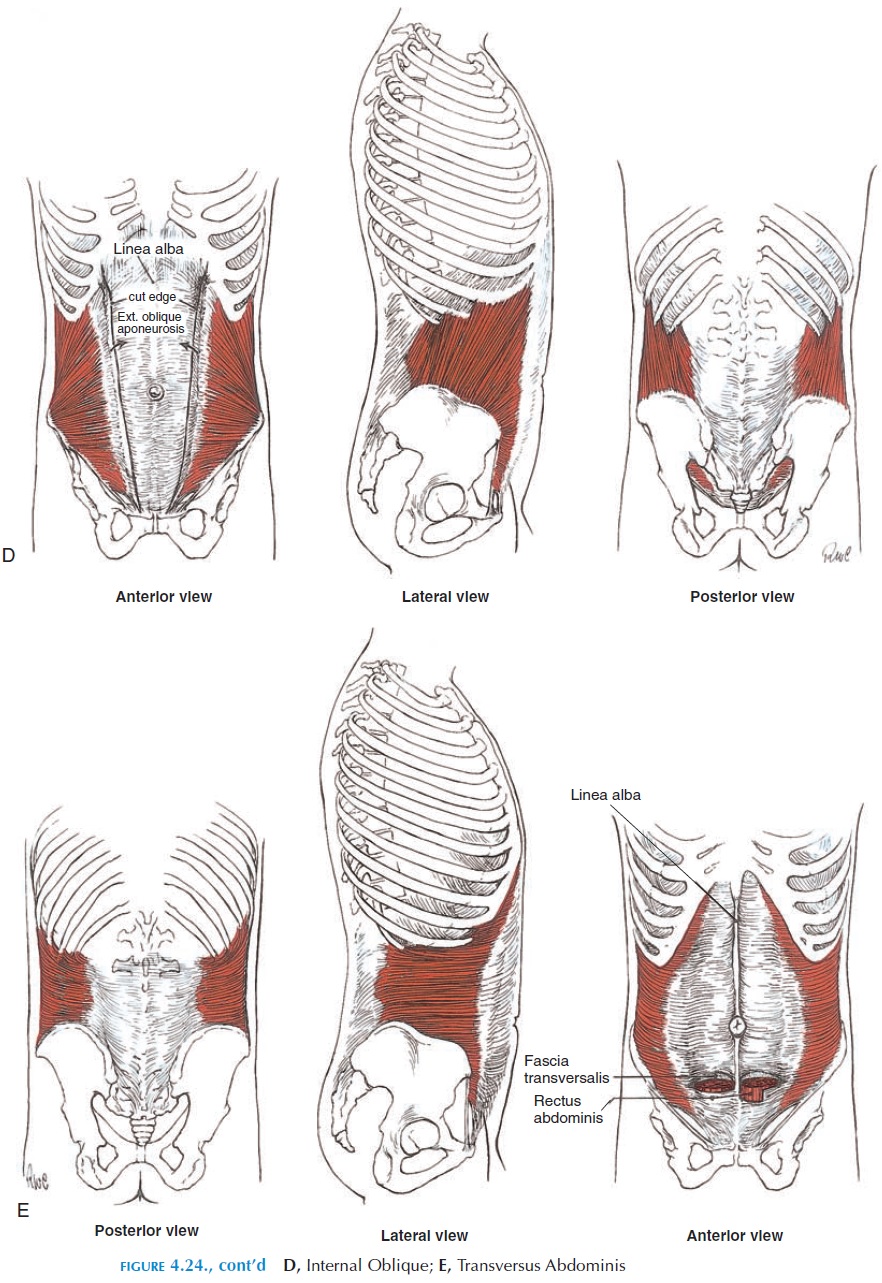
The origin, insertion, and action of individual groups of spinal muscles are listed in Table 4.5. The spinal muscles located in the neck have been previously dis-cussed. It is not possible for the massage therapist to access individual muscles of the spine, and an idea of the general grouping of these muscles and general di-rection of fibers would suffice for most therapists.
Muscles of the Abdomen
The muscles of the abdomen are large and sheetlike, with the fascicles running in different directions. These powerful muscles help protect the internal or-gans and flex and rotate the spine. The arrangement of the muscles is similar in the cervical, thoracic, and abdominal region because they all develop in the fe-tus from the same origin.
Located in the neck are the scalenes; in the thorax, the external intercostals, internal intercostals, and transversus thoracis; and in the abdomen, the exter-nal obliques, internal obliques, and transversus ab-dominis. The thoracic and the abdominal muscles are in three layers. The innermost layer has fascicles running transversely. The internal intercostals and internal obliques (the middle layer) have muscle fascicles run-ning upward and medially, similar to forward slashes (///). The outermost layer (the external intercostals and external obliques) has fibers running downward and medially, similar to backward slashes (\\\) or the direction that hands are placed into pants pockets.
In addition to the oblique muscles described above, straplike muscles are seen in the cervical, tho-racic, and abdominal regions. These muscles have fascicles running parallel and vertical. In the ab-domen, the rectus abdominis runs near the midline from the xiphoid process to the pubic bone. A thick, connective tissue sheet, the linea alba, is seen in the midline, separating the right and the left rectus. The rectus muscle are segmented transversely by connec-tive tissue (transverse inscriptions) and are responsible for the transverse indentations seen in front of the abdomen of a muscular individual.
Muscles of the Thorax
Many powerful muscles that support the shoulder girdle are attached to the thorax (see Figures 4.25, 4.27, and 4.28). Anteriorly, the pectoral group—the pectoral major and minor—are attached. Posteriorly, large muscles, such as the trapezius superiorly and latissimus dorsi inferiorly, cover the thorax before they reach their points of insertion. Muscles that sup-port the scapula, such as the rhomboids, lie deep to the trapezius over the thorax. Posteriorly, closer to midline and deep to the trapezius, are the muscles of the spine (previously described). In the sides, the tho-racic cage is covered by the serratus anterior, which has an origin with a saw-toothed appearance. This muscle inserts into the medial border of the scapula. Because all of the above muscles are involved with the pectoral girdle, only the deepest layers are de-scribed here. For details of the other muscles, see Muscles That Move the Shoulder.
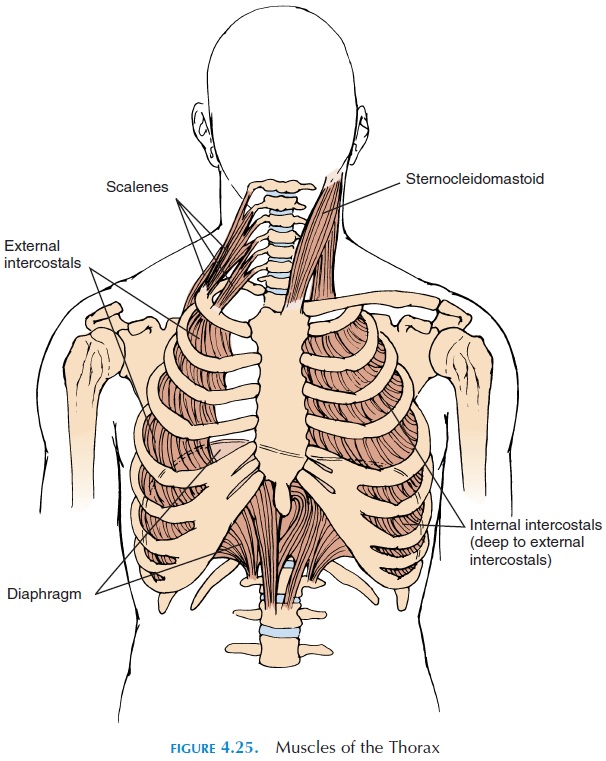
Together with the intercostals, the diaphragm (see Figures 4.25, 4.26, and Table 4.7) is an important mus-cle involved in respiratory movements. It is a sheet of muscle with a central connective tissue section. The di-aphragm separates the thoracic cavity from the ab-dominopelvic cavity, and structures passing from one cavity to the other pierce through the diaphragm. It, therefore, has a circular origin and inserts into the con-nective tissue sheet in the center, the central tendi-nous sheet. The diaphragm is a powerful muscle usedduring inspiration. It is innervated by the phrenic nerve that descends all the way from cervical regions C3–C5.
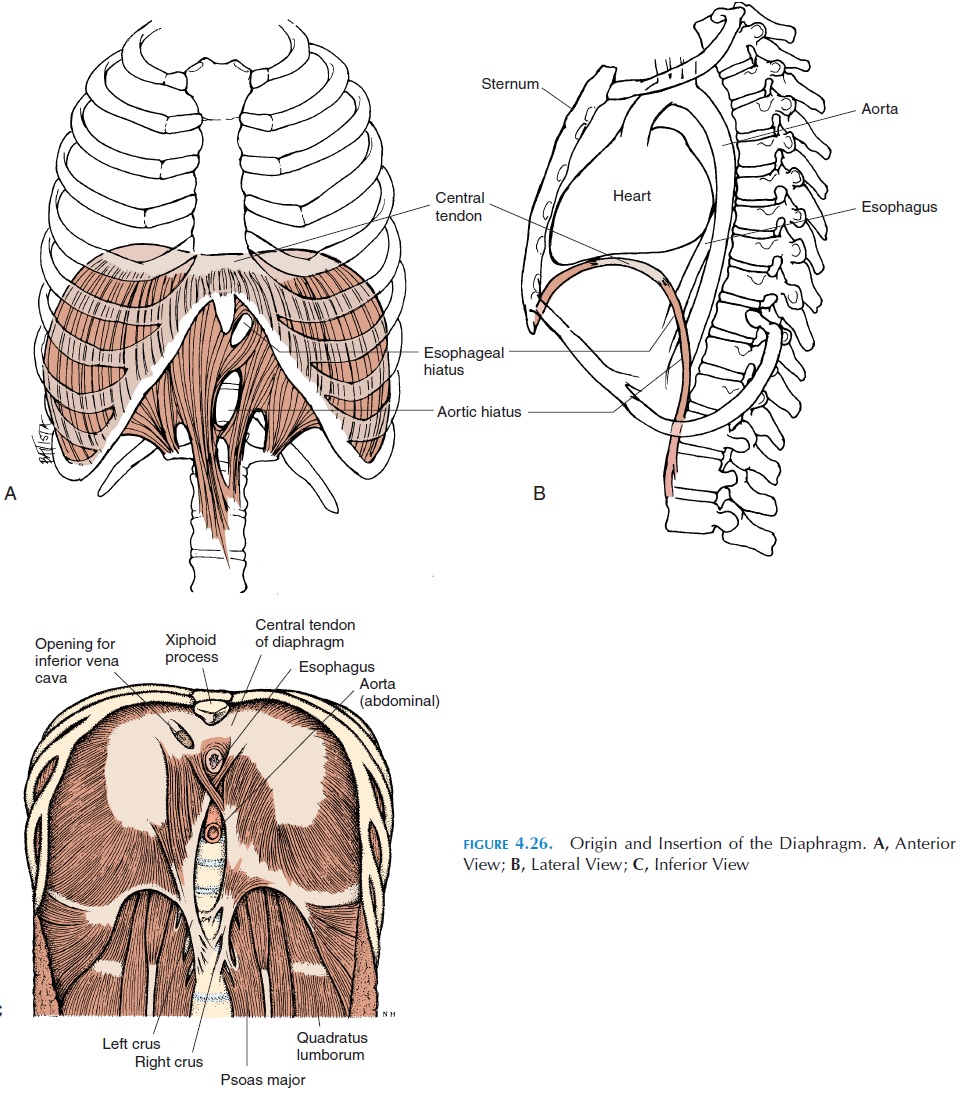
Muscles of the Pelvic Floor
There are many muscles that extend from the sacrum and coccyx to the ischium and pubis, supporting the organs of the pelvic cavity, flexing the sacrum and coccyx, and controlling the movement of material through the urethra, vagina (females), and the anus. These muscles form the pelvic floor, or perineum. Sphincters—circular muscles—guard the openings and provide voluntary control. In males, some super ficial muscles compress the base and stiffen the penis and help with ejaculation of semen and passage of urine. (The names of the individual muscles are be-yond the scope of this book. The student is encour-aged to refer to any standard anatomy textbook for details of these muscles.)
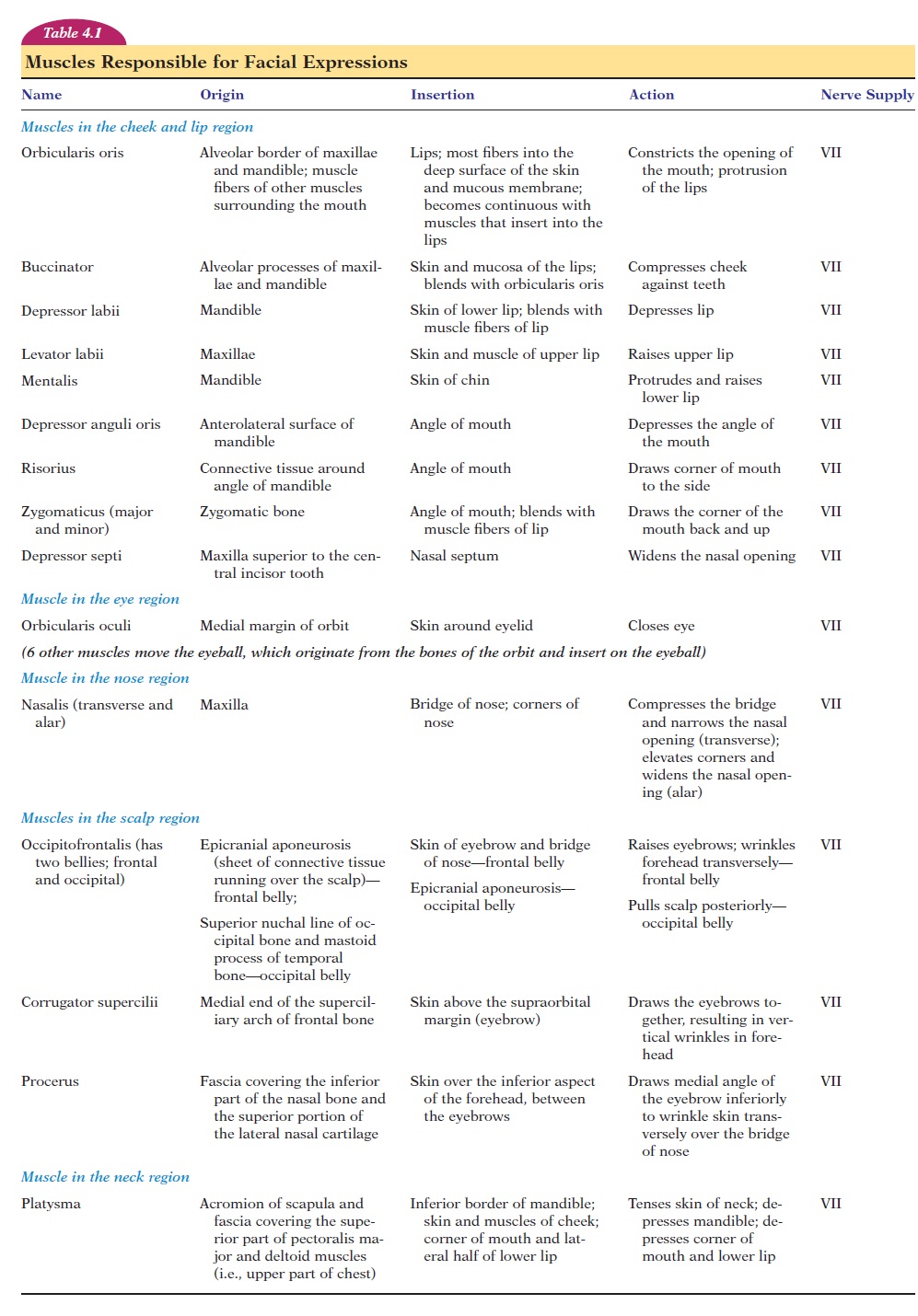
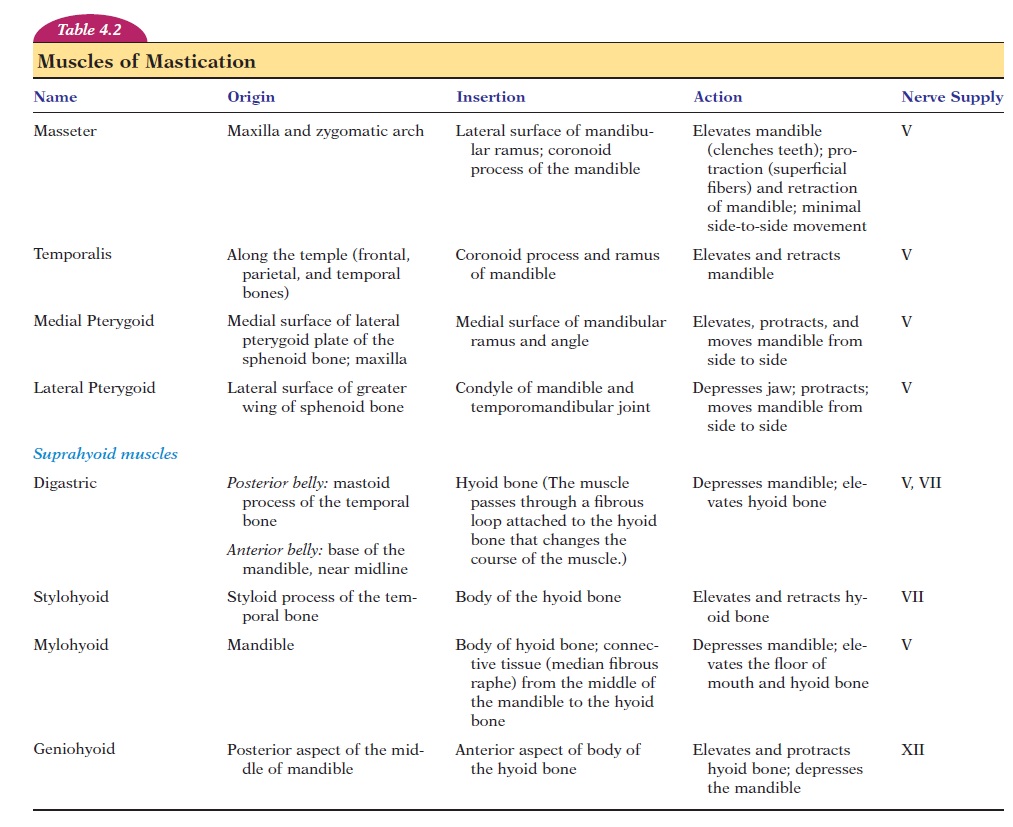
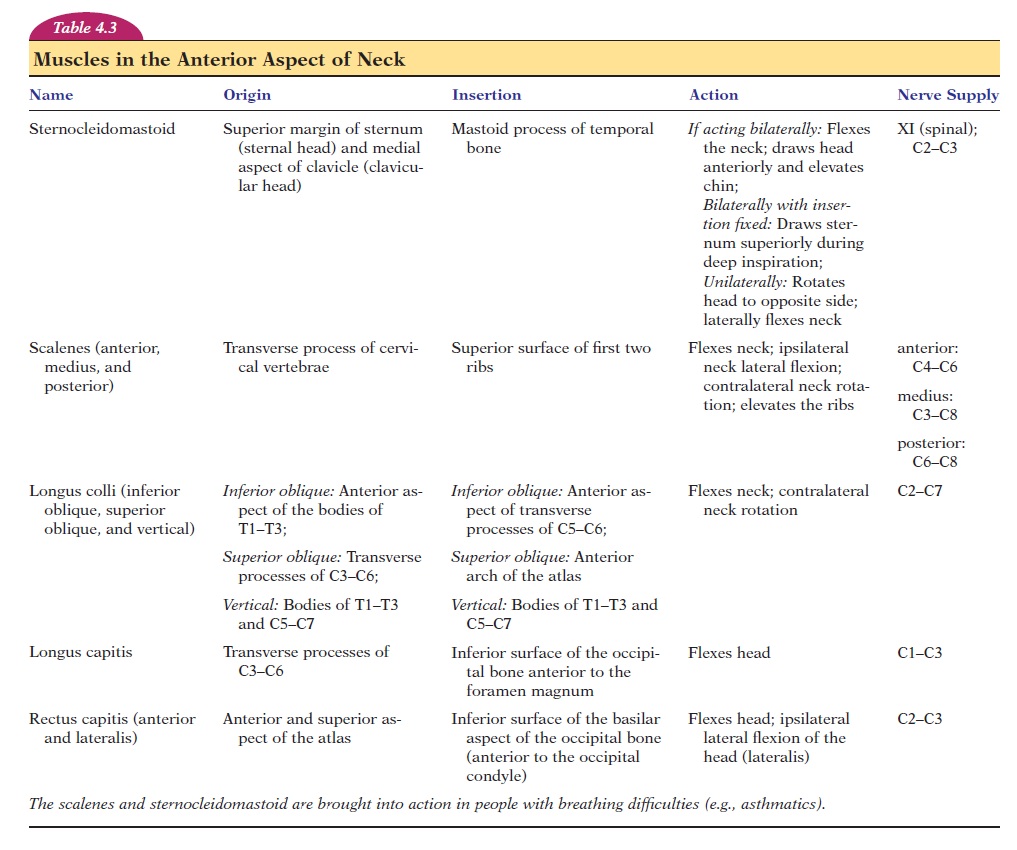
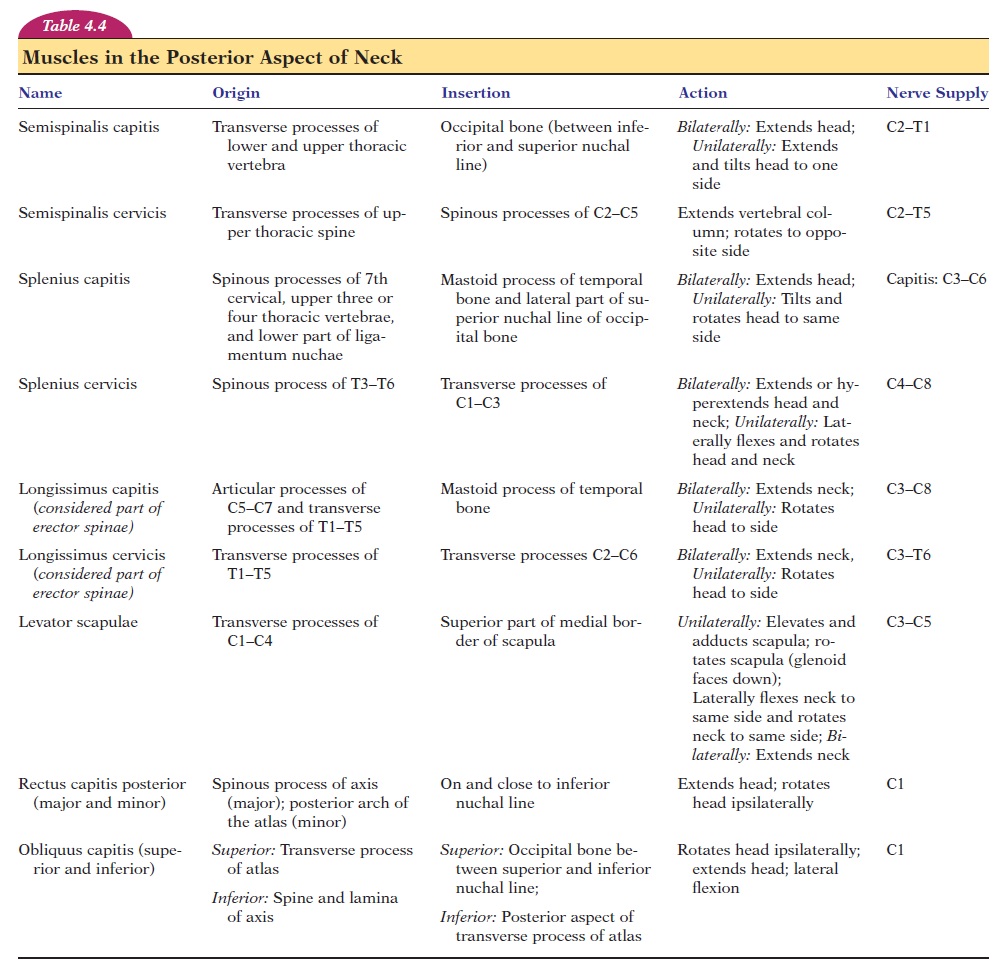
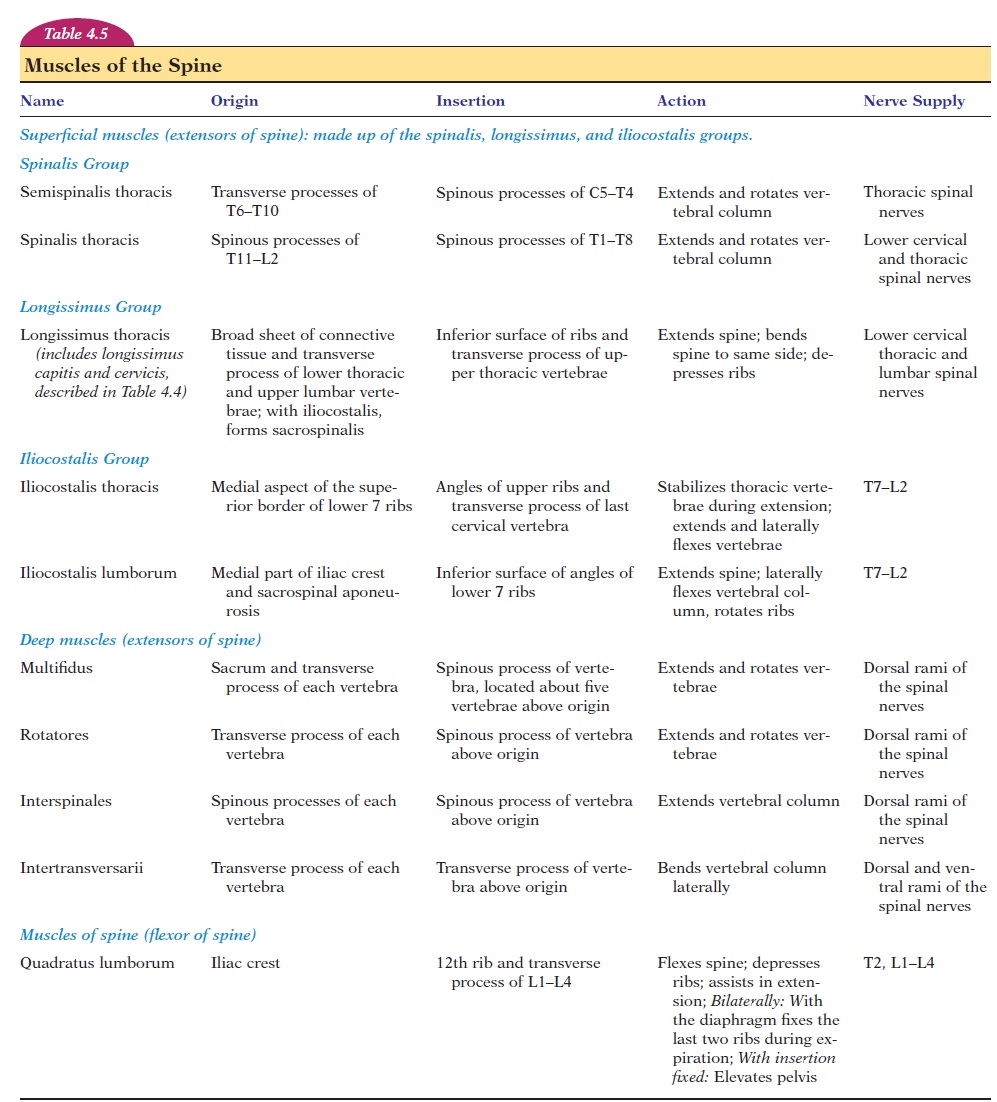
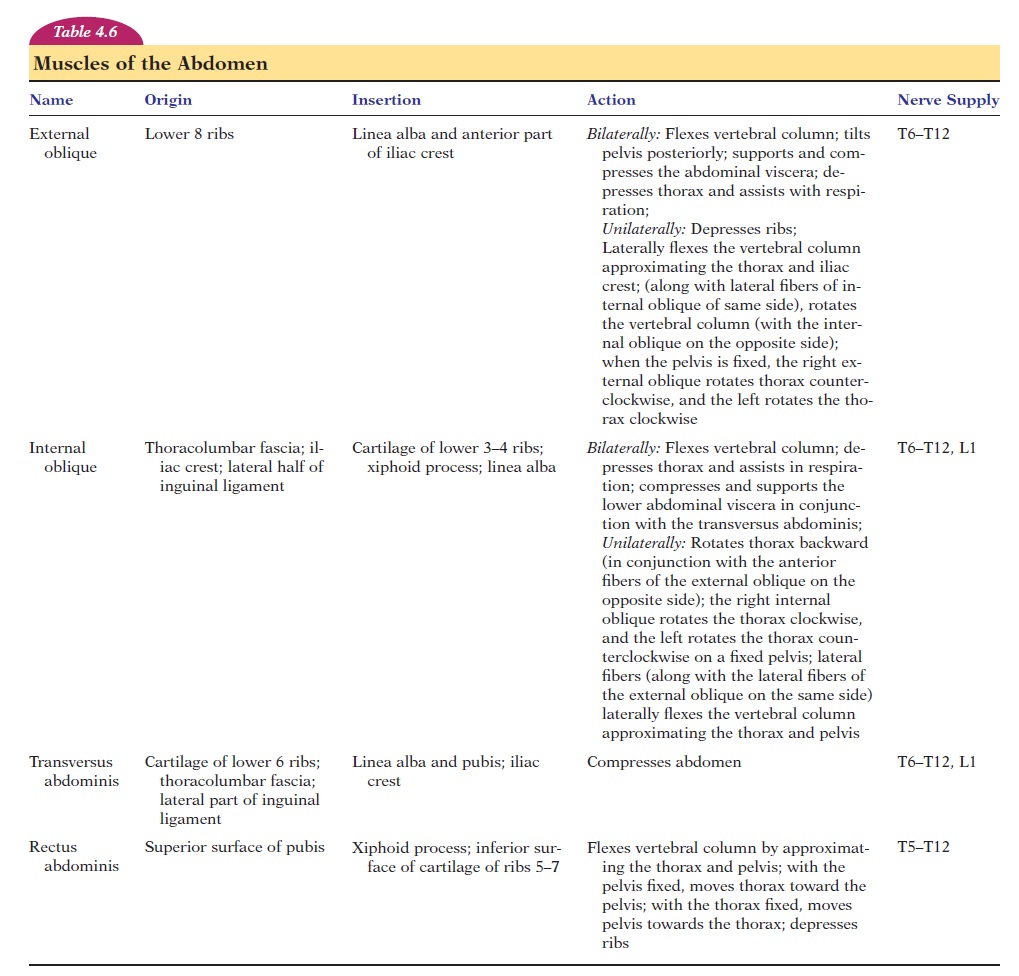
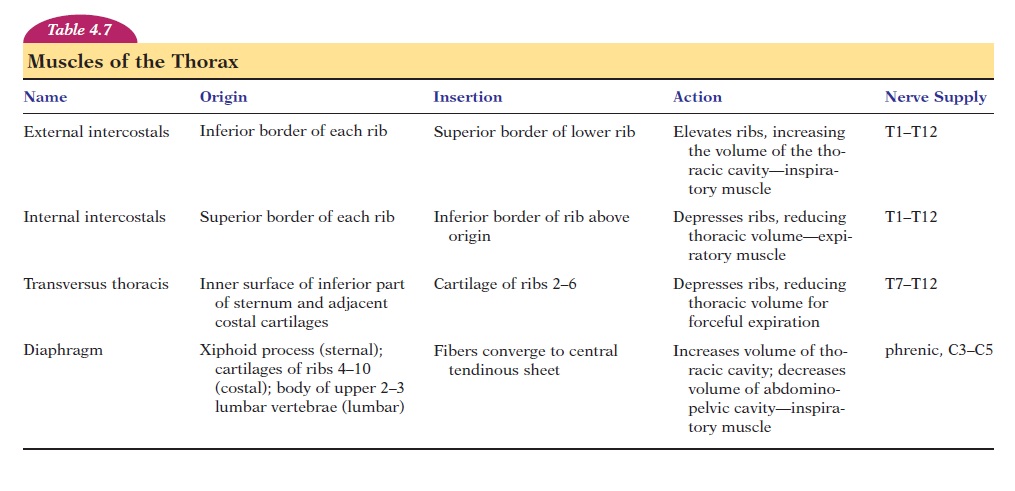
Related Topics